 Strava Relative Effort – Everything You Need to Know
Strava Relative Effort – Everything You Need to Know
STRAVA introduced RELATIVE EFFORT 3 years ago (April 2018) as a replacement to their Suffer Score. Since its creation, It’s been expanded to provide validity across many sports; show trends; and to better accommodate shorter, harder efforts.
There is subscriber-only functionality related to RELATIVE EFFORT available at STRAVA online, on your STRAVA app and on some cycling devices – notably WAHOO, Suunto and Garmin.
Much of the functionality requires that you have the STRAVA Subscription at £4 / US$5 per month, it’s slightly cheaper if bought annually. You can get a free 30-day trial…or a 60-day one if you know where to look 😉
Designed for STRAVA with Marco Altini PhD: HRV4TRAINING
What is Relative Effort? How does it work? Is it any good?
Yes, it’s good and useful. Here’s why.
At the most simple level, it’s a single number representing the total effort of each of your workouts. That single number should be comparable across sports and across all your friends.
eg Your all out 20 minute run should give the same number as your friend’s all out 20 minute run.

As you can see, Marco Altini based it on Bannister’s widely used TRIMP formulae. TRIMP measures time-in-heart-rate-zone and allocates more points for time spent in a higher zone.

The clever way that it has been implemented by STRAVA is that STRAVA’s large data set has been used to improve the accuracy of the calculations across sports. Also, the efforts used to calculate your zones can be taken automatically from your maximal efforts which the algorithm identifies from your workouts.
Don’t worry if, instead, you know the basis for your HR zones. You can override the automation and use your manual zones.
Your Relative Effort workout scores are then also used elsewhere in the subscription Features to give you an indication of your readiness to train and perform. That kind of analysis is one of the first things you want to start looking at as you take your training more seriously.
However, let’s leave the fitness & freshness sub-topic as that is a different, but related, part of the feature set. Let’s return to the pure Relative Effort measure we are talking about here.
On a Garmin watch
This data field is optional. You do NOT have to add this data field to your device, simply recording heart rate is enough. But look, over two million of you already have the data field! Wow, that’s one of the most popular CIQ ‘apps’ on Garmin connect.

On your Wahoo, all you have to do is add the existing RELATIVE EFFORT data field to an appropriate page. Then, as your workout progresses, you can see your RELATIVE EFFORT score progressively rise from zero…to hero. Or not hero depending on how it goes!
It’s a similar thing with your Garmin and you can download the Strava Relative Effort data field that you can add to a screen just as you would do with any other data field.
The Suunto Plus feature for Strava Relative Effort also follows the same principle except you have to enable it at the start of each workout and you can’t use other Suunto Plus features simultaneously.
I guess it would be fun to compare your live score to that of your training partner to see who is genuinely trying the hardest and you can absolutely do that…even in real-time.
It would also be nice if STRAVA’s training plans had a RELATIVE EFFORT indication for each workout and then you could, sort of, use the live RELATIVE EFFORT data field as a broad indicator of the correctness of your workout or even as a target for a longer, steady-state workout. IIRC the STRAVA plans pre-date the introduction of Relative Effort.
Note: The RELATIVE EFFORT data field will use the HR Zones as determined by STRAVA rather than the zones that might be on your Garmin/Wahoo.
Note: non-subscribers (ie regular FREE STRAVA users) CAN also see the relative effort score live on the watch…but nowhere else.
Activity Relative Effort
When you check back on your activity either on the app or online platform then subscribers will see their score recorded for posterity. Here are two of mine, the first score mostly comes from a very hard 18-minute effort and the second one is an extended z2 effort in the Pyrenees. Both were hard in different ways.
I only include the second image because it says “Massive Relative Effort” and also shows a somewhat scary 75km/h. You needed to know that.
You could maybe check back at the same ride or run from an earlier week. If your score is progressively falling and your times are getting no slower then you are getting fitter.
It seems that all zones for sports other than bike and run are based on the zones for bike or run! whichever is deemed the most appropriate. Thus swimming zones are based on bike zones where, at most, your max HR is 12 bpm lower for cycling than running. Indoor, pool-based activities with no GPS are not supported by RE and but that data can appear in weird circumstances but then seems too low when it has happened to me.
Weekly Relative Effort
This is a nice addition to the app and a little more useful, IMO, than the single Relative Effort number. I
STRAVA determines a weekly “RELATIVE EFFORT RANGE” for you which varies daily and is based on a 3-week moving average. If you stay within range then you shouldn’t require much recovery time at all. Consequently, if you go above the range then an easy day might be appropriate tomorrow.
This weekly view gives you a reasonable indication of the general direction of your overall training load as well as an indicator for the need to recover.
In the chart above you can see my efforts are generally higher than in other, recent weeks.
But if you look at the middle chart, above, then you can also see that the highlighted week is also quite high when compared to even earlier weeks towards the start of this year. That makes sense too as I am now starting to cycle more with the onset of better weather.
Relative Effort Trends
On the web interface, there is a nice chart that shows how Relative Effort can be used to represent your Fatigue, Form and Freshness over time. Power could be used as a measure of effort instead but this chart specifically uses the Relative Effort metric that has the added advantage of more easily being able to represent sports other than cycling (where power meters are more common).
Is it worth it?
If you are into deep sporty analyses then STRAVA’s RELATIVE EFFORT is NOT for you. You almost certainly will have something similar and a bit better in Golden Cheetah or Training Peaks or similar.
However, if you just have Garmin Connect for your data ‘analysis’ then becoming a subscriber to get RELATIVE EFFORT can give you some interesting and actionable insights. If you are an occasional and time-crunched data analyser then STRAVA could be a good way to go. As you become familiar with RELATIVE EFFORT then you will probably stray towards looking at your STRAVA-based FITNESS and FRESHNESS data and that should help better guide your training efforts.
Those of you who spend a lot of time on the STRAVA platform for social reasons and don’t look elsewhere for any kind of data analysis will find that RELATIVE EFFORT gives you interesting insights and is probably worth paying a bit of extra cash on to help hone your training.
- Q: Would I use it?
- A: No. But I DO look REGULARLY at the exact same sort of data and analyses but on different software.
My Research and some more informational resources
- I exchanged a few emails on this topic with Marco Altini who did the groundwork for STRAVA.
- STRAVA FAQ
- STRAVA Engineering article
- This is a STRAVA-approved interview that was published on an online Canadian site which is now offline and so I’ve linked to it here Source via Marco Altini. Check out the links at the end of the article for some interesting thoughts on training with HRV and polarised training.
new STRAVA Local Legends – Segments, Jim, but not as we know them
Sports App League Table – Winners & Losers 2018-2019 – Best Sports App
STRAVA Stats Show Surprising US vs UK Differences: starting with…America is Bigger
STRAVA Stats Show Surprising US vs UK Differences: starting with…America is Bigger
 Strava Relative Effort – Everything You Need to Know
Strava Relative Effort – Everything You Need to Know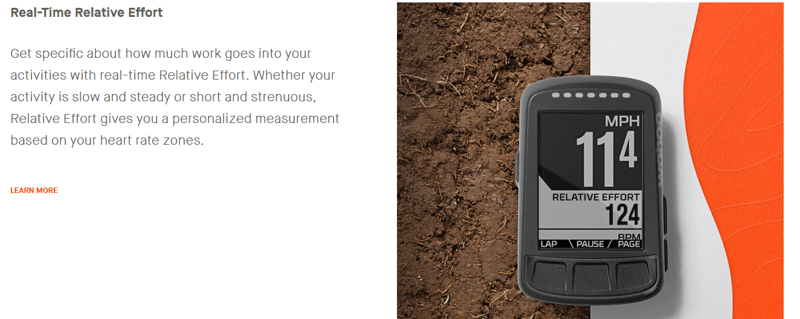
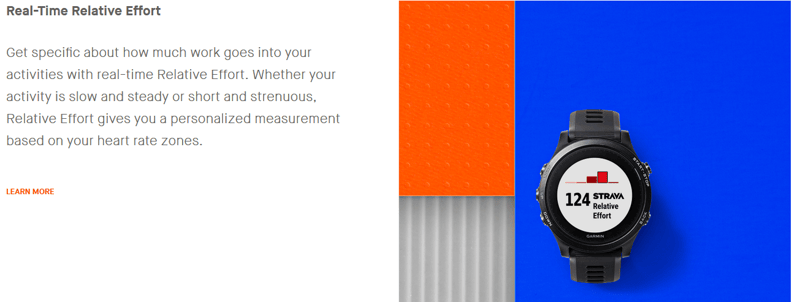
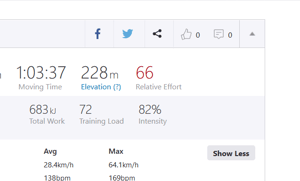
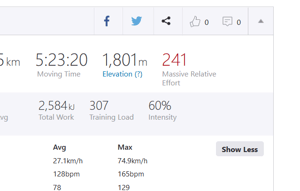
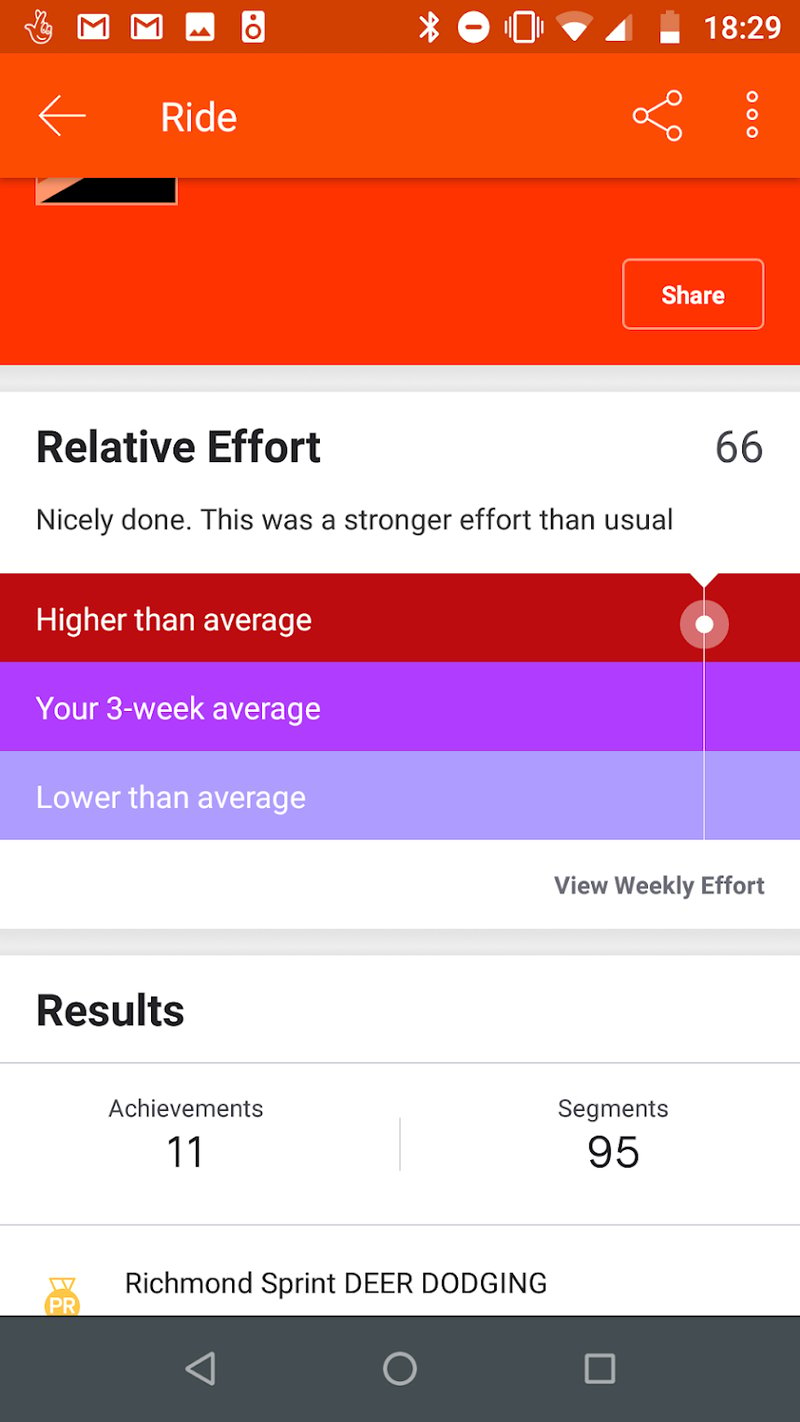





I suspect that native Garmin’s (Firstbeat’s?) Training Effect with Exercise Load and additionally with Aerobic/Anaerobic Effects is something very similar and also works fully across all sports types. No idea if it is by any means “better” and whatnot, but I use it personally as some kind of metric of where I am and what accumulated load I receive.
However, all these metrics are based on heart rate and cannot take into account what they don’t measure (obviously). I recently had an inline skating ride – very slow and “easy”, way down in Zone 1, but because it is rare activity, my legs hurt like hell and running the next morning was uncomfortable to say the least.
yes the TRIMP appraoch has many variations and is used by a huge number of companies in this space.
partially an explanation of your skating could be the zones. you will be using muscles differently. had you performed a lactate test or similar then those muscles would have ‘failed’ earlier
I don’t find the relative effort score matches my bodies feedback. I can smash a weight training session for an hour to the point my muscles are completely dead and the score is low 20-30ish.
I can then run a 45 min 10K and the RE is up in the hundreds. Doesn’t make sense to me…
I’d be interested to compare the output to whoop band but I don’t have one.
the strain from weights or team sports is different, on the whole, to endurance type workouts. TRIMP/relative effort is best for endurance workouts.